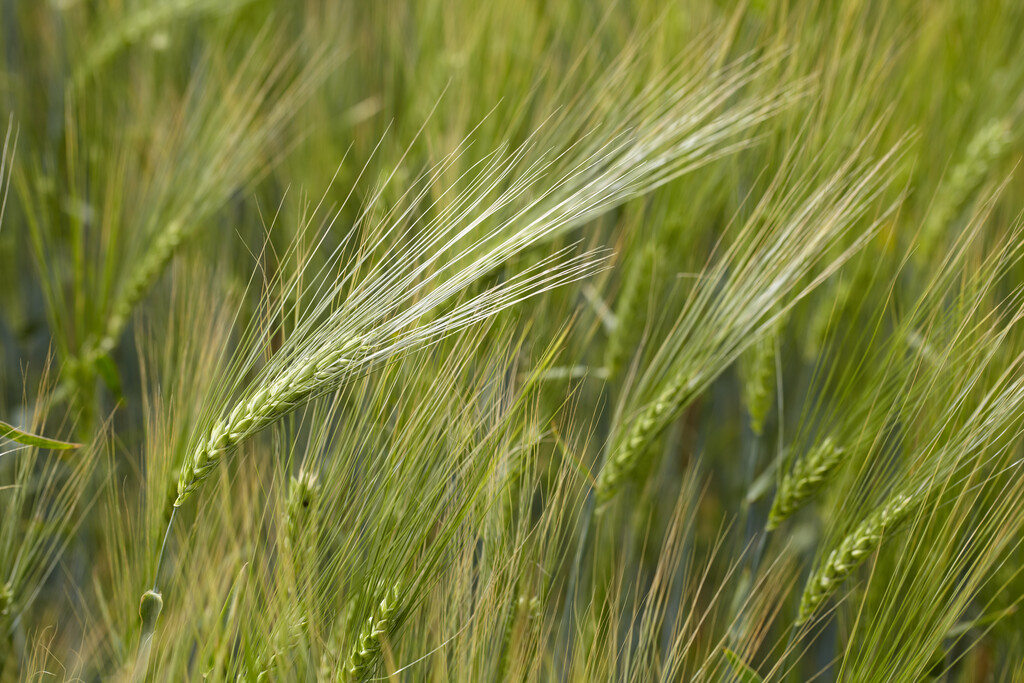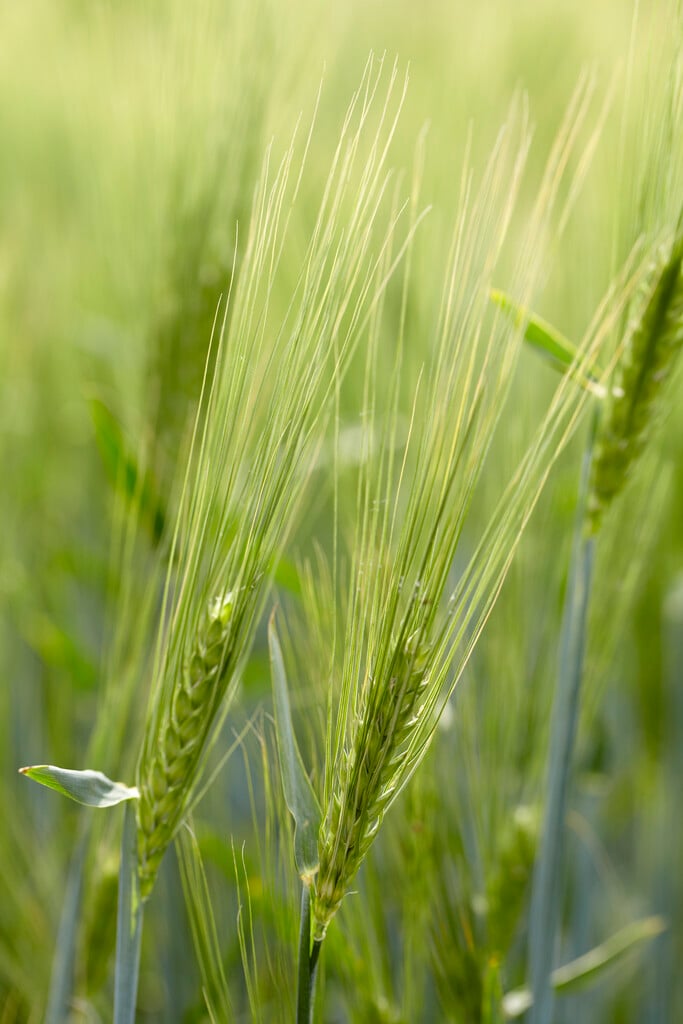Hordeum vulgare
barley
An annual grass, more commonly known as barley with erect green stems and alternate leaves. Green flower spikes and kernels appear in the summer and wave in the breeze, turner paler golden brown as they mature. The number of rows on the flower spike determine which type of barley it is. Six-row barley is used for animal feed as it has a higher protein content where as two-row barley is used for malt production for beer
Size
Ultimate height
1–1.5 metresTime to ultimate height
1 yearUltimate spread
0.1–0.5 metresGrowing conditions
Moisture
Well–drainedpH
Acid, Alkaline, NeutralColour & scent
| Stem | Flower | Foliage | Fruit | |
| Spring | Green | |||
|---|---|---|---|---|
| Summer | Green Brown | |||
| Autumn | ||||
| Winter |
Position
- Full sun
Aspect
South–facing or West–facing
Exposure
Exposed or Sheltered Hardiness
H6Botanical details
- Family
- Poaceae
- Native to GB / Ireland
- No
- Foliage
- Deciduous
- Habit
- Bushy, Columnar upright
- Genus
Hordeum, also known as barley, are summer-flowering annual or perennial grasses that originate from temperate regions of the northern hemisphere and South America
- Name status
Correct
How to grow
Cultivation
Grow in well drained soil in full sun
Propagation
Propagate by seed in situ in spring or autumn
Suggested planting locations and garden types
- Architectural
Pruning
No pruning required
Pests
Generally pest-free
Diseases
Generally disease-free
Love gardening
Sign up to receive regular gardening tips, inspiration, offers and more
View our Privacy Policy
Get involved
The Royal Horticultural Society is the UK’s leading gardening charity. We aim to enrich everyone’s life through plants, and make the UK a greener and more beautiful place.

